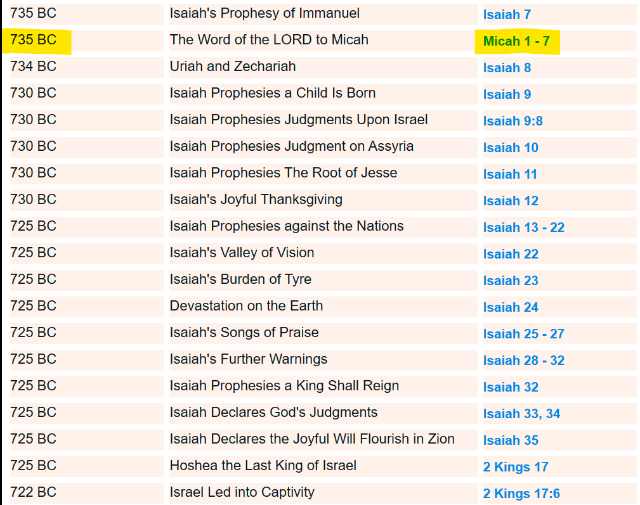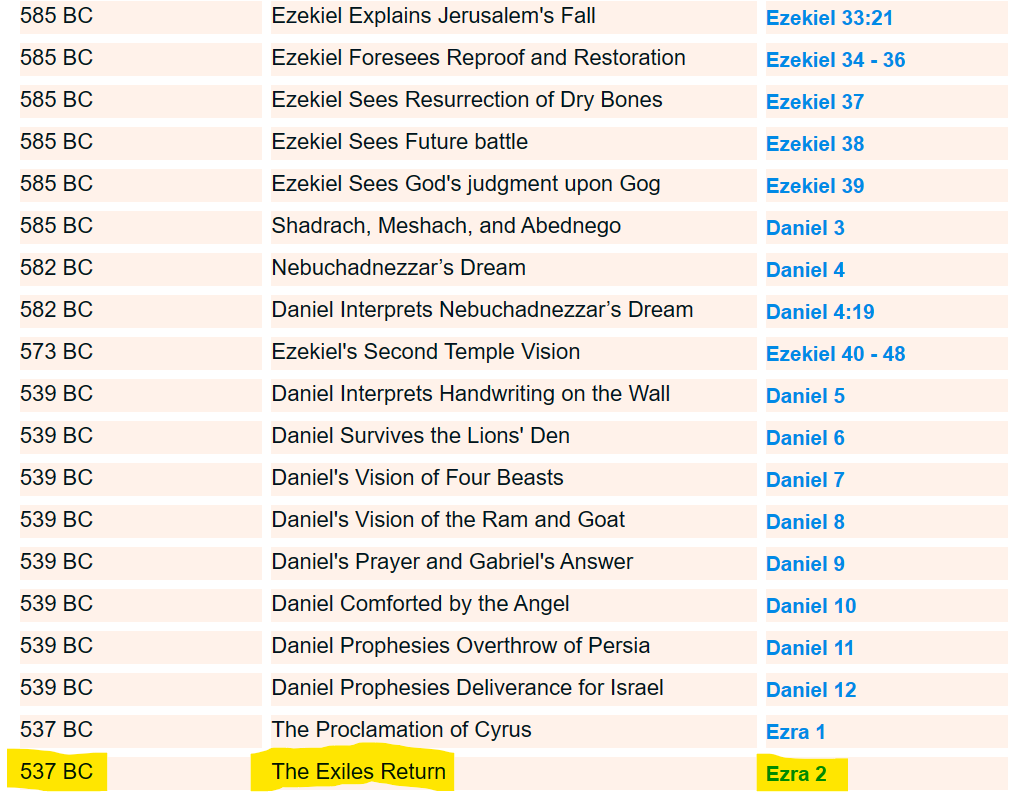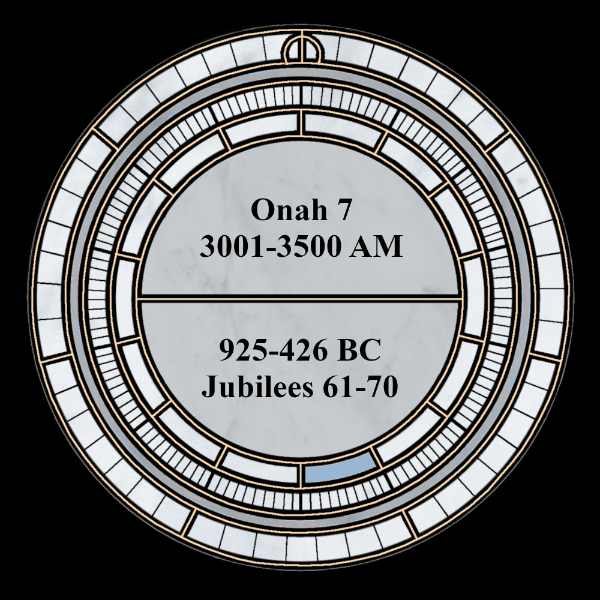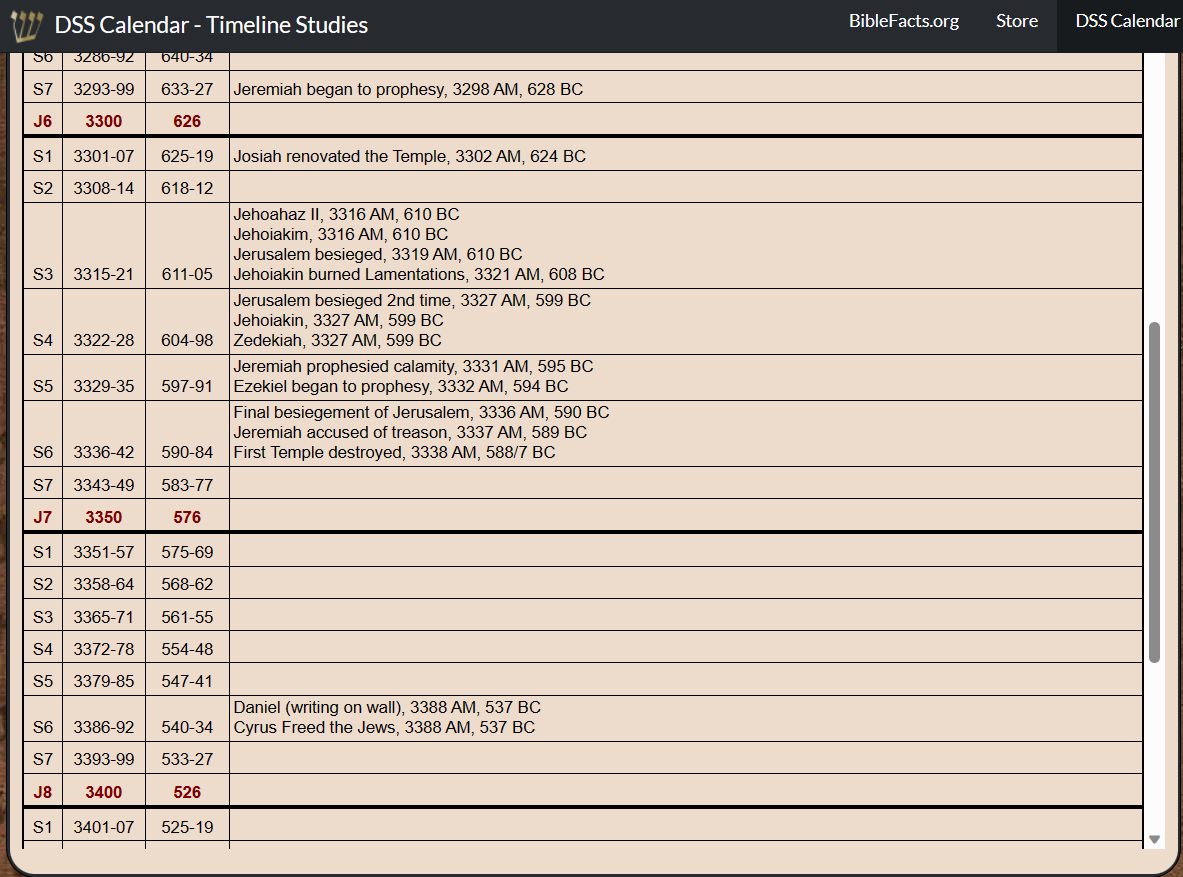This paper will being Micah, chapter 5 into view with special attention to ancient near eastern (ANE) worldview and the Divine Council Worldview (DCW) as well as the Deuteronomy 32 worldview (D32).
OVERVIEW: The overall story presented in Micah 5 is the actions of Messiah (Jesus) after His resurrection and through His people (believers, disciples, et al) and we start with a mustering of troops and Messiah being struck (killed, buried, resurrection, et al). This is spiritual warfare and not physical.
And then we back up in time a little to the birth of Messiah (verses 2 and 3) with a keen eye on the strange and weird regarding the birth of Messiah. The story then moves to Messiah from His birth to what He does overall in verses 4-5a. In 5b-6 the story then throws backwards (or forwards if you are Micah) to the invasion of Assyria and "The Assyrian".
FUN FACT: It turns out that the Assyrian lands of Micah's time will eventually become the lands of Asia Minor, roughly covering the landscape of the primary stories of reaching the nations and the seven churches listed in John's revelation.
Verse 6 states the topic and purpose of the remaining text: Deliverance from the Assyrian, but not physically or in this realm. The tone will move to the unseen realm of spiritual warfare, which is where the history of humanity has been for the last 2,000 years. However, as with many OT prophecies, there are co-equal applications to both physical and unseen realms, thus we may also still see fulfillments of Micah 5 yet in the future.
The final parts of Micah 5 are verses 7 to 9 and 10 to 15. The 7-9 section is talking about the remnant of Jacob with a final declaration that Messiah will conquer "your [Jacob's] adversaries". These are the fallen sons of God and dead Nephilim demon unclean spirits, which is what makes this spiritual warfare and not physical (yet!). Finally, in verses 10-15, the narrative changes and is no longer talking to the remnant of Jacob, but to the gods and demons themselves and the spiritual warfare of Messiah (in and through His people) is carried out in all of the nations (Genesis 10-11 Tower of Babel event).
Writing around 735-700 BC. Israel (northern kingdom) wracked with idols and Judah (southern kingdom) nearly as bad. Very soon, Israel will be taken away and spread throughout the nations of Genesis 10/11. Later, Judah will fall to the Babylonians, but remain basically in-tact in captivity. It is Israel that will be split up by the Assyrians.



From the time of Micah to the siege of Jerusalem and its fall will be about 150 years. There will be another 50 years of exile. Interesting that this is the length of a Jubilee cycle. The graphic below is a Jewish Zadok (DSS) calendar timeline, where we can see how the events line up calendrically.


This is 4:14 in the Masoretic text and not 5:1
1 Now muster your troops, O daughter(city of)of troops;
siege is laid against us;Assyrians
with a rod they strike the judge of Israel who?
on the cheek.
1. General Depiction - Some scholars believe that the "judge of Israel" is symbolic and represents leadership in general. In this context, "judge" could refer to any leader, whether a king, ruler, or religious leader.
2. Specific Leaders - Other scholars interpret it as referring to a specific ruler or king during the time of Micah, although views vary on exactly who this might be. Some possible candidates include King Ahaz or King Hezekiah of Judah.
3. The Messiah - Considering the Messianic interpretation of Micah chapter 5, especially verse 2, some Christian scholars suggest that the "judge of Israel" is a prophetic reference to Jesus Christ. They interpret the "smite...with a rod upon the cheek" as an allusion to Christ’s humiliation and suffering.
2 But you, O Bethlehem Ephrathah, variation of Ephrath ("fruitful")
who are too little to be among the clans of Judah,
from you shall come forth for me
one who is to be ruler in Israel,
whose coming forth is from of old,
from ancient days. עוֹלָֽם ‘ō·w·lām everlasting; not Dan 7 Ancient of Days
3 Therefore he shall give them up until the time
when she who is in labor has given birth;[a] Isa 66:7-8
then the rest of his[Judah's]brothers shall return
to the people of Israel.[b]
- [a] Isaiah 66:7-8 Before she goes into labor, she gives birth; before the pains come upon her, she delivers a son. Who has ever heard of such things? Who has ever seen things like this? Can a country be born in a day or a nation be brought forth in a moment? Yet no sooner is Zion in labor than she gives birth to her children.
- [b] Is this another application of "Layers of multiple fulfilment" where prophecy is concerned? We have the return of the remnant of Jacob from the nations yearly during the Second Temple Period. This is why "Acts 2:5 Now there were dwelling in Jerusalem Jews, devout men from every nation under heaven." at Pentecost. Another fulfilment comes as Israel becomes a nation in a single day and Jews from all the nations start streaming back to the land of promise starting in 1948.
4 And he[Jesus]shall stand and shepherd his
flock in the strength of the LORD,[a]
in the majesty of the name of the LORD his God.
And they[his flock]shall dwell secure,[b] abide (John 15:4)
for now he shall be greatthat is—he shall be Magnified
to the ends of the earth.[c]
5 And he shall be their peace.
When the Assyrian[d]comes into our land
and treads in our palaces,
then we will raise against him seven shepherds[e]
and eight princes of men;we don't know who these people are
6 they shall shepherd the land of Assyria with the sword,
and the land of Nimrod at its entrances;Gates of hell?
and he[Jesus]shall deliver us from the Assyrian
when he comes into our land
and treads within our border.
- [a] Jesus standing in the "strength of the LORD" may well be referring to Jesus (as fully man) being filled with the power of the Spirit (dove descending, et al). This same Spirit of Christ in power, indwelling all disciples to carry Jesus-in-them to people in the nations to rescue them, which is the story of Micah 5.
For example, in the Old Testament, the Spirit of God empowers individuals to accomplish specific tasks. In Judges 14:5-6, the Spirit of God comes upon Samson, giving him the physical strength to kill a lion.
Similarly, in the New Testament, Jesus begins his ministry filled with the power of the Spirit (Luke 4:14). The apostle Paul also refers to the "Spirit of power" in 2 Timothy 1:7. - [b] "dwell secure" is "they shall abide" (i.e., abide in me? John 15:4)
- [c] Acts 1:8: "But you will receive power when the Holy Spirit comes on you; and you will be my witnesses in Jerusalem, and in all Judea and Samaria, and to the ends of the earth."
Literal sense: geographical limits of the earth; 1 Enoch has detailed descriptions of Enoch traveling to such places; heavens meet the earth; gates were stars (sons of God) emerge; storehouses of winds; pillars of the earth; etc.
Metaphysical sense: the "ends of the earth" could also refer to the dimensional boundaries between the physical world and the spiritual realm. Enoch's visions often transcend earthly boundaries, seeing into heaven and the ends of the earth.
Temporal limit: of the world. Enoch contains apocalyptic literature, with prophecies about the end of the world and divine judgment. In this context, the "ends of the earth" could signify the end of times or an eschatological conclusion. - [d] The Assyrian king who attacked and eventually conquered the northern kingdom of Israel was Tiglath-Pileser III. He reigned from 745-727 BC. However, the final conquest and deportations of Israelites were essentially accomplished under the reign of Shalmaneser V and his successor, Sargon II, around 722 or 721 BC
According to the British Museum, Tiglath-Pileser III claimed in his annals to have received tribute from the king of Israel (Menahem of Samaria). You can see the artefact as item "ME 118892" in the British Museum collection. This corresponds to the account in 2 Kings 15:19-20.
The fall of Samaria (capital of the northern kingdom of Israel) to the Assyrians is recorded in 2 Kings 17:5-6, but the biblical account does not name the Assyrian king responsible. Historians typically attribute this to Shalmaneser V and/or Sargon II based on Assyrian records. Sargon II records in his annals that 'Samaria I looked at, I captured' (See Cylinder Inscription, lines 23-38) - [e] Seven churches of Revelation are all within the borders of the former Assyrian empire, each with a pastor (7 shepherds):
1. Church of Ephesus
2. Church of Smyrna
3. Church of Pergamum
4. Church of Thyatira
5. Church of Sardis
6. Church of Philadelphia
7. Church of Laodicea
Founded by 8 princes?: The apostle Paul (Ephesus), six unknown, and guided by the apostle John.
While not conclusive, it is of high interest, given the context of Micah 5, that such a storyline is applicable, especially from the viewpoint of a first century apostle, disciple, and general believer. The question ought never start with "What do I think?", but with "What would they have thought?". Therefore, in the case of Micah 5, ask this last question and be sure to put on your ANE/DCW/D32 (see introduction above) worldview mind and understanding before you so and then see what turns up.
A Remnant Shall Be Delivered
7 Then the remnant of Jacob shall be
in the midst of many peoplesJews among nations - Acts 2
like dew from the LORD,dew is prep for seed of Gospel - Acts 2
like showers on the grass,
which delay not for a man
nor wait for the children of man.waiting for apostles of Christ
8 And the remnant of Jacob shall be among the nations,
in the midst of many peoples,
like a lion among the beasts of the forest,
like a young lion among the flocks of sheep,how Jesus sees
which, when it goes through, treads down
and tears in pieces, and there is none to deliver.
9 Your hand shall be lifted up over your adversaries,
and all your enemies shall be cut off.Bulls of Bashan
Talking to the enemies
10 And in that day, declares the LORD,
I will cut off your horses from among you
and will destroy your chariots;[a]
11 and I will cut off the cities of your land
and throw down all your strongholds;[b]
12 and I will cut off sorceries from your hand,
and you shall have no more tellers of fortunes;
13 and I will cut off your carved images
and your pillars from among you,
and you shall bow down no more
to the work of your hands;
14 and I will root out your Asherah images from among you
and destroy your cities.
15 And in anger and wrath I will execute vengeance
on the nations that did not obey.
- [a] Double-entendre with horses and chariots? See 1 Enoch 86:4 "let down their privy members, like horses". This might be one way to take this as an OT Jew. However, once we link chariots, then the picture changes slightly, but no less supernaturally. See note below for "chariots of the gods".
- [b] For the weapons of our warfare are not of the flesh but have divine power to destroy strongholds." - 2 Corinthians 10:4.
- Item 3
- Item 4
Translation differences: Examining Micah 5:10-15 from each of the listed Bible versions (below) reveals the following differences in language and interpretation:
1. New International Version (NIV)
2. English Standard Version (ESV)
3. New Revised Standard Version (NRSV)
4. New Living Translation (NLT)
5. King James Version (KJV)
6. New King James Version (NKJV)
7. The Message (MSG)
8. American Standard Version (ASV)
9. Contemporary English Version (CEV)
10. The New American Bible (NAB)
1. Horse and chariot removal: These are mentioned in each version, but the translations slightly differ. NIV, ESV, NRSV, and ASV use "chariots" while NLT uses "chariots and cities". KJV and NKJV say "horses and chariots", and The Message uses "horses and Helicopters". The NAB translates it as "horses from among you" and CEV reads "war horses and chariots".
2. Destruction of cities and strongholds: Most versions mention the destruction of cities, but the language varies. For example, MSG says "tear down all your forts" whereas ESV says "cut off your cities". NLT says "I will tear down your walls", and NAB says "demolish your fortresses".
3. Idolatry and Witchcraft: The wording for this varies greatly among versions. NIV and ESV use "witchcraft", while NRSV uses "sorceries". NLT translates it as "sorcery", while KJV and NKJV say "witchcrafts". MSG uses "sorcery and witchcraft", ASV uses "sorceries", and CEV and NAB translate it as "witches".
4. Carved images and sacred pillars: NIV, ESV, and NRSV all use the term "carved images", while NLT uses "carved idols". KJV, NKJV, and ASV use the old term "graven images". MSG translates it as "statues", and CEV uses "idols". NAB uses "sacred pillars".
5. Worship of hands: The way each version translates this also varies. NIV, ESV, and NRSV use "works of your hands". NLT says "idols you have made", while KJV, NKJV, and ASV use "works of thine hands". MSG says "handmade gods" and CEV uses "own idols". NAB uses "the idols your hands have made".
Overall, all versions convey a similar message, but the choice of words and style of language used differ. For example, The Message Bible uses contemporary and conversational language, while the King James Version uses traditional and formal language.
Chariots of the Gods: Yes, certainly. The term "Chariots of the Gods" often brings to mind thoughts of extraterrestrials and UFOs due to popular culture and theories about ancient aliens. However, within the context of ancient Mesopotamian narratives and mythology, the concept of "chariots of the gods" is different.
In ancient Near Eastern mythology, the gods were often associated with their own unique celestial vehicles. These vehicles, commonly referred to as chariots, symbolized the power and control the gods had over the natural and supernatural worlds. They were often depicted as magnificent, grand structures, symbolizing the power and might of these deities.
For example, in Mesopotamian mythology, the gods traveled in sky chariots, often pulled by divine animals. In the Epic of Gilgamesh, a well-known Babylonian epic poem, the protagonist, Gilgamesh, seeks out the secret of immortality from Utnapishtim, who tells him of a great flood (much like the biblical flood) and his subsequent deification. Utnapishtim was granted immortality by the gods and lives at the edge of the world where the sun rises.
In the story, it is mentioned that Shamash, the sun god, travels the sky from East to West in a chariot. Additionally, Marduk, the chief god of Babylon, was known to ride a chariot drawn by four horses with poison in their mouths. These are but examples, as many deities within the pantheon were associated with such celestial chariots.
These representations embody the belief that the gods directly influenced natural events and that their celestial movements had profound implications on earth, impacting everything from the change of seasons to human destiny. They also reinforced the vast distance, both literally and metaphorically, between the gods and humankind.
In the Old Testament of the Bible, chariots are often associated with God's divine power, authority, and presence. They primarily serve as symbols of divinity, majesty, and the lavishness of God's glory.
The most significant biblical reference where chariots appear synonymous with the divine is in the prophetic vision of the Prophet Elijah's ascent to heaven in 2 Kings 2:11, "As they were walking along and talking together, suddenly a chariot of fire and horses of fire appeared and separated the two of them, and Elijah went up to heaven in a whirlwind." Here, the divine chariot represents God's heavenly vehicle that transports the prophet directly to heaven.
One of the most extraordinary accounts of divine chariots is found in Ezekiel's vision, where he describes heavenly chariots made up of complicated amalgamations of living creatures, wheels within wheels, and "the glory of the LORD". This depiction in Ezekiel 1 and 10 is famously enigmatic and challenging to interpret.
In Psalm 68:17, it is written, "The chariots of God are tens of thousands and thousands of thousands...". Here, chariots are used metaphorically for God's omnipresence and omniscience signifying that God is everywhere, extending His protection and rule over everything.
Therefore, just like the ancient Mesopotamian narratives, the chariots, in the context of the Old Testament, were associated with the divine power and majesty of God, symbolizing His reign over the world. However, the nature of this association is monotheistic in the Old Testament, focusing on Yahweh, the God of Israel, compared to the polytheistic belief system of Mesopotamia.